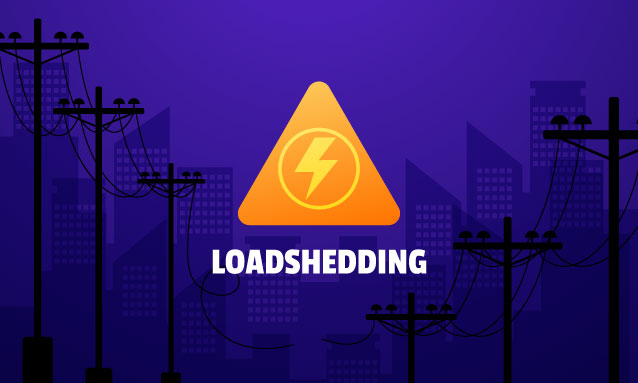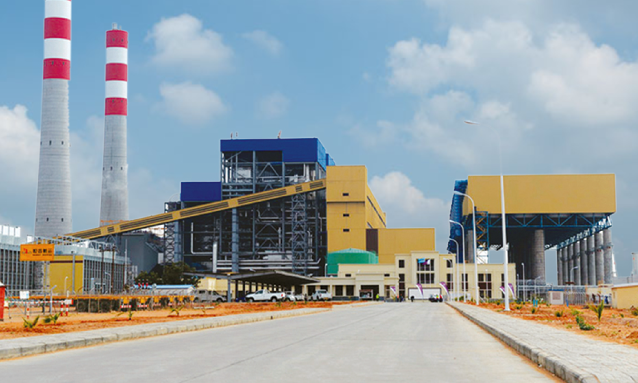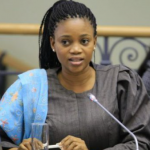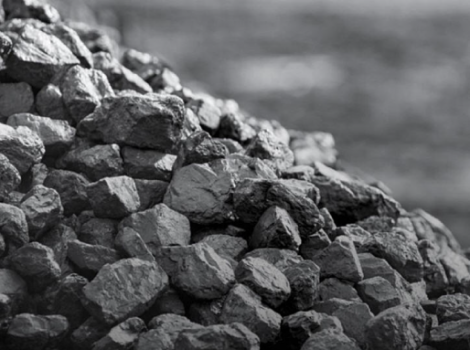
2 April 2025
Recently, we wrote an opinion piece on the ongoing loadshedding crisis. We warned long-suffering Botswana residents to brace themselves for a long, rough ride, and it appears we were on the money. We also bemoaned the fact that the government has been mute on the matter. As if some bigwig had heard our complaint, on Monday, the Minister of Minerals and Energy, Bogolo Kenewendo addressed Parliament on “Power supply challenges, and measures to improve security of supply”.
While it’s good we have finally heard the official line, it’s not quite the good news we’d hoped and prayed for. In fact, Kenewendo’s address paints a far bleaker picture than even we could have ever imagined in our worst nightmares. Quite frankly, Botswana Power Corporation and the Ministry of and Energy are in a shambles.
Minister Kenewendo’s talking points…
Morupule B 600MW Power Station
In 2008, BPC, China National Electric Engineering Co. Limited, and Shenyang Blower Works Electro-Mechanics Import and Export Co. Limited (CNEEC – SBW) here after referred to as CNEEC concluded an Engineering, Procurement and Construction (EPC) Contract to design, develop, construct, supply, install, and commission the Morupule B Power Station (MBPS).

The project was funded through Government equity and a loan facility amounting to USD 825 million (equivalent to BWP 10.5 billion) provided to BPC by Industrial and Commercial Bank of China (ICBC) which was disbursed in the year 2010. The ICBC loan has an outstanding balance of BWP3 billion, as at March 2025 and will be fully armotised in March 2030.
However, the detailed design as well as the construction of the power plant by CNEEC have significant deviations from the basic design which was not complied with hence the challenges being experienced with MBPS performance.
The performance of Morupule B 600MW coal fired power station (MBPS) has been erratic since commissioning in 2012/13 due to substandard construction, with significant noncompliance to specifications, poor workmanship, and equipment / material defects.
Given the construction and equipment defects, the plant experiences frequent failures notably on boiler pressure parts thus affecting power generation from time to time. Direct costs (in addition to construction costs) for MBPS (since its inception) amount to BWPS.4 billion, inclusive of operations and maintenance costs. As the plant experienced reliability and availability challenges from the on-set, the project has incurred indirect costs of BWPP18.9 billion in power imports and owner’s engineer services. Of the BWPP18.9 billion, power imports account for BWPP18.1 billion in the 13 years of the plant’s existence.
In the case of MBPS, both factors (quality of the plant and the standard of O&M) needed to be addressed to turnaround performance of the plant. In this regard Botswana Power Corporation (BPC) carried out two interventions to improve and sustain operation of the plant as outlined below.
Morupule B Plant Performance Trend
During the period 2014-2019, the plant EAF averaged 57%. The below industry standard performance (57% versus 85%) is largely attributed to construction and equipment defects which are being addressed through the ongoing remedial works project.
During the 3-year period, 2020-2022, the average EAF was 𝟯𝟯%. The plant performance was low due to two factors, namely;
- construction and equipment defects, and;
- O&M challenges experienced by BPC hence the O&M intervention, which increased the EAF to an average of 𝟱𝟳% for the period 2023 – 2025.
Prevailing Power Supply Situation
The supply situation is expected to gradually improve with the recovery of Morupule B units and ongoing efforts to secure power imports from South Africa and other member countries of the Southern African Power Pool. Baring the unforeseen, it is expected that the supply constrains will ease by mid-June 2025.
Medium to Long-Term Power Supply Measures
Government is making progress towards developing a sustainable energy mix which will ensure adequate and reliable electricity supply to the economy and in addition position the country as a net exporter of electricity in the region. A plan is in place to secure a 615MW base load coal fired power station, which is expected to take 18-24 months to address the prevailing Morupule B plant challenges.
– The development of a 600MW coal-fired power plant in Mmamabula has commenced and is expected to provide more capacity in 2027.
– The first utility-scale solar PV plant, Phase 1 of the Mmadinare Solar Cluster, with a capacity of 50MW, achieved commercial operation on 12th March 2025. The second phase of the project reached financial close on 19th December 2024, enabling commencement of the project, which is expected to provide another 50MW of clean energy by the end of the year.
- The Jwaneng 100MW solar PV project is in the final stages of reaching financial close, which is expected by the end of April 2025. This project is expected to be in commercial operation by the end of 2025.
- Two small-scale grid-tied solar PV projects with a combined capacity of 4MW, namely Bobonong (3MW) and Shakawe (lMW), attained commercial operation in October 2023.
– Eight small-scale grid-tied solar PV projects are at the financial close stage and are expected to be in operation by the end of this year (2025).
The Ministry is working to increase the capacity of these projects, which currently stands at 26 megawatts. These projects are being implemented by Batswana.
In line with the objective to secure 50% generation contribution from renewable energy sources by 2030, the Ministry resolved to revise the scope of the two solar projects that had been planned for Maun (200MW Concentrated Solar Plant) and Letlhakane (l00MW solar PV).
As a result, three large-scale grid-connected solar PV projects will soon be procured, namely Maun 500MW solar PV, Letlhakane 400MW solar PV, and Isang 400MW solar PV. These projects, together with the Mmadinare Solar Cluster (l00MW) and the Jwaneng Solar Project (l00MW), will yield a total capacity of 1.5 gigawatts.
In the short term, BPC will continue to operate two diesel generation plants, namely Orapa 90MW Turbine Power Plant and Matshelagabedi 70MW Diesel Plant. These are very high-cost generation facilities only dispatched under grid emergencies to avoid grid failure.
The Orapa 90MW Turbine Power Plant has dual fuel (diesel and gas) operation capability. In the medium term, BPC is pursuing a project to convert the Orapa facility to gas operation using imported gas and switch to local gas (coal bed methane “CBM”) when CBM is developed to commercial production levels. The capacity of the plant will be increased to 130MW through conversion of the facility from the Open Cycle Gas Turbine (OCGT) technology to Combined Cycle Gas Turbine (CCGT) technology. The Matshelagabedi 70MW Diesel Plant will be decommissioned when new baseload generation is secured.
Financial Position
Over the past four years, Botswana Power Corporation (BPC) has been experiencing severe liquidity challenges largely on account of exorbitant unit cost of power imports which increased by 166% (85 thebe to 226 thebe). Local generation contributes up to 65% of the country’s electricity demand, therefore 35% of the electricity demand is met through power imports. This scenario will continue to prevail until completion of the ongoing Morupule B defects remediation project (expected to be accomplished at the end of 2027) and the commissioning of new Independent Power Producer Plants.
The situation has been exacerbated by non-cost reflective tariffs which have not been adjusted in the past three years. It should be noted that BPC’s tariffs currently at Pl.27 per kilowatt hour are significantly low compared to neighbouring countries such as South Africa and Namibia whose tariffs average P2.78 per kilowatt hour and P2.06 per kilowatt hour respectively.
With the non-cost reflective tariffs, BPC has been recording losses over the past years as follows:
Year ended – Loss in BWP
2021 – 384,134,000
2022 – 650,280,000
2023 – 525,612,000
2024 – 1,842,425,000
Creditor balances continue to grow, with quite a large percentage of them being grossly overdue, impacting negatively on service delivery. One such creditor who has been negatively impacted is Morupule Coal Mine (MCM) who is owed huge sums of money, a debt that brings in the risk of failure to supply coal, which in turn will result in the non production of electricity from BPC’s two (2) coal fired generating plants of Morupule A and Morupule B. As of 31st January 2025, the Corporation’s creditor balance stood at P2,609,218,966.61
Furthermore, power import bills from the sister utilities have gone unpaid for some time, leading to a risk of export curtailment, which, if it materialises, will leave Botswana with a nation-wide blackout.
The non-cost reflectiveness of Botswana Tariffs have led to a huge mismatch between BPC’s monthly income against monthly financial obligations. On a monthly basis, BPC’s electricity sales revenues are P430 million, against monthly cash expenditure of around P650 million.
To add to the cash challenges, the Corporation must also service a loan from the Industrial and Commercial Bank of China (ICBC), which requires USD56 million (approximately P700 million) in cash per year for instalments, and another loan from the Botswana Public Officers Pension Fund (BPOPF) where payments for interest are P140 million per year. The Corporation has designated the Tariff Subsidy to fund the ICBC loan instalments, and partially pay for power imports, whilst the BPOPF Loan Interest is serviced from revenue collections.
Loadshedding to Persist for a While

“The supply situation is expected to gradually improve with recovery of Morupule B units and ongoing efforts to secure power imports from South Africa and other member countries of the Southern African Power Pool. Baring the unforeseen, it is expected that the supply constrains will ease by mid-June 2025,” – Bogolo Kenewendo, Minister of Minerals and Energy said in parliament on Monday.
“However, it should be noted that the security of supply will only be at the desired level post 2027 when new coal fired base load generation would be on the grid.”
Source: BW Parliament via Facebook



